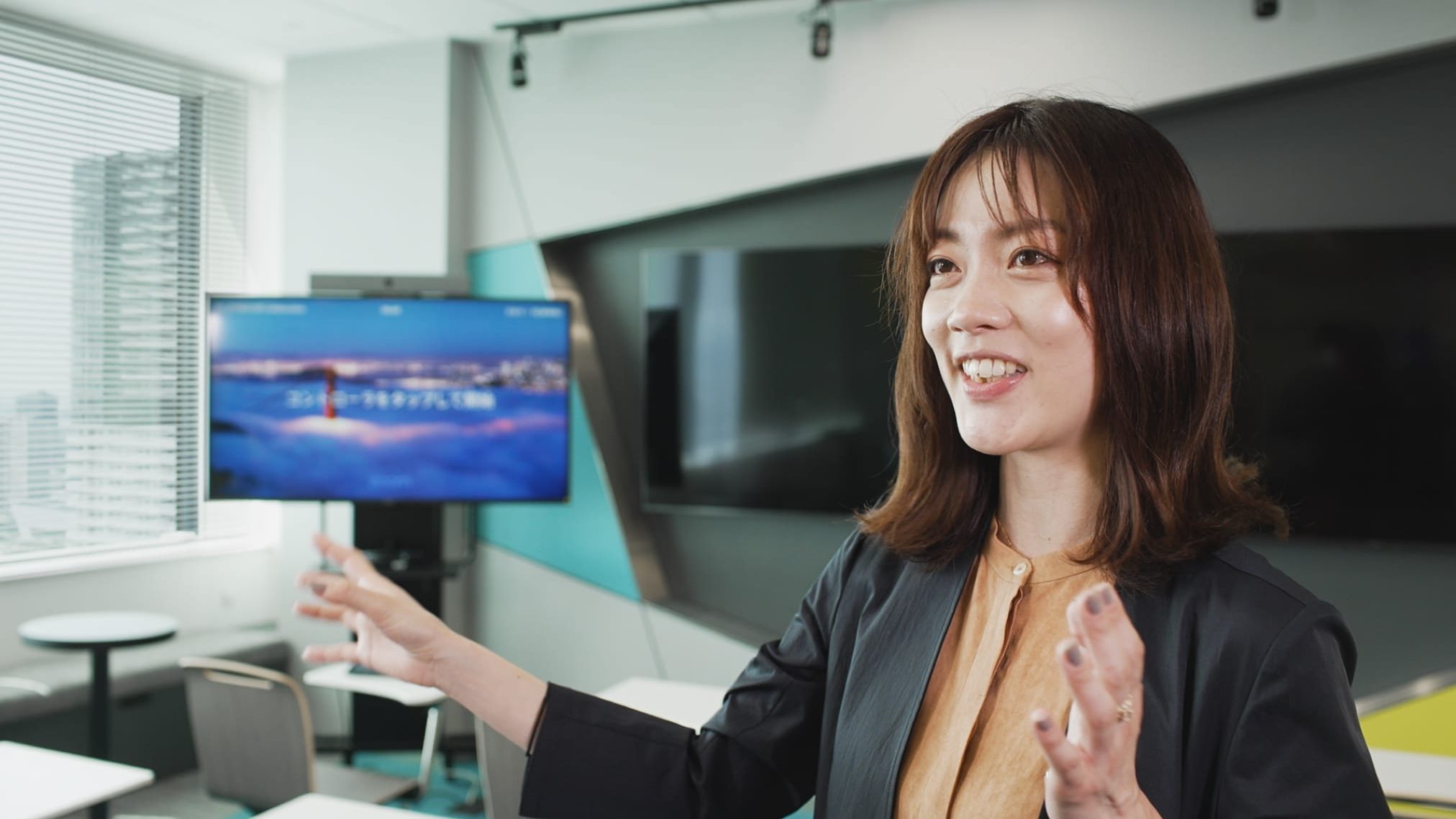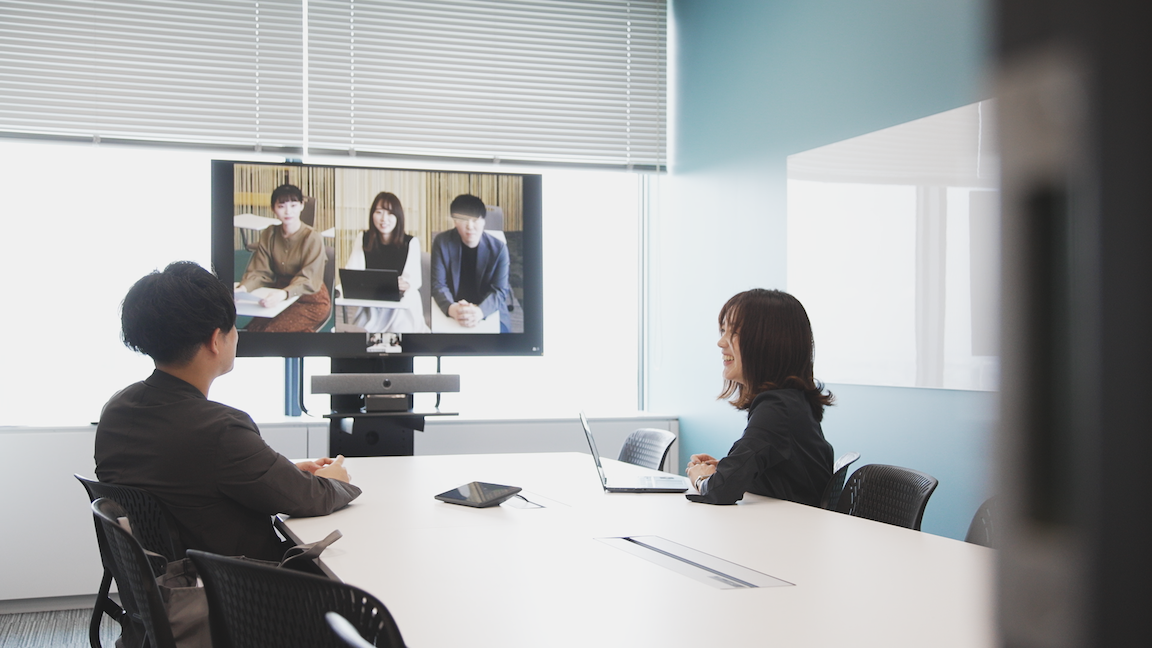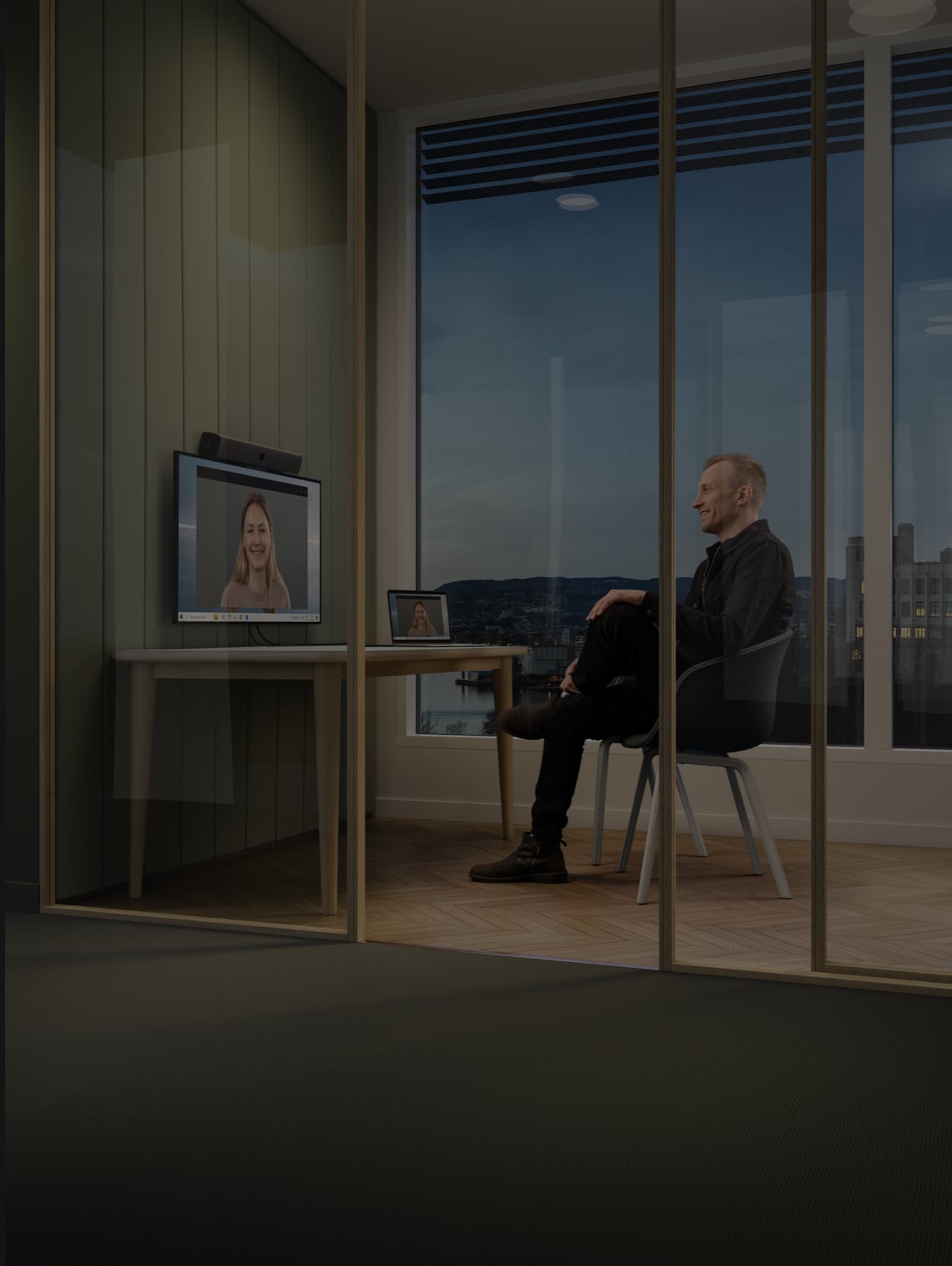Japanese IT Giant Embraces Activity-based Working with the Help of Neat
Hayley Spooner, Sep 8, 2022

2021 was a landmark year for international powerhouse of IT excellence TIS Inc. Not only was it TIS’s 50th anniversary, they also opened a brand new headquarters in Toyosu, Tokyo. What’s more, they rolled out an all-new hybrid workstyle for its 21,000+ strong workforce: ‘wide-area activity-based working’ – or ABW – facilitated by mass video collaboration and the adoption of Neat devices.
Wide-area activity-based working is a workstyle where employees freely choose when and where they work. They devise their own schedules and decide whether they want to be in the office, at home, in a co-working space – or a blend of the three. Flexibility is the key word. When they are in the office they can sit at any desk they like, wherever makes the most sense according to what they need to get done that day and with whom. TIS’s state-of-the-art Toyosu office was designed with wide-area ABW at its heart. There are various types of collaboration areas on each floor, carefully planned to encourage group discussion and the expression of ideas.
A number of factors preceded TIS’s bold move to ABW. One of the main ones was that the previous model, where employees had a fixed desk, seemed to be limiting communication between employees of different teams and departments. By encouraging more movement around the office, more and better conversations would easily and organically occur. Another important reason for the ABW transition was to support the workstyle revolution that first arose in the pandemic and now continues to make waves. Currently, around 70% of TIS’s employees are opting to work remotely. Naturally, this significantly increases the demand for a high quality video collaboration infrastructure.
TIS chose Neat devices for a variety of reasons. Firstly, they needed devices that could support both Zoom and Microsoft Teams, as both video platforms were already used by and familiar to employees company-wide.
The main reason we selected Neat devices is because they support Zoom and Microsoft Teams. We use both video platforms, so the fact that users can participate in meetings with either system was a big benefit.
Sato Yuya, Project General Manager, Information System Department.
Secondly, TIS wanted a visual and audio experience that mirrored real-life conversation as closely as possible. In the past, employees were hindered by sound that sometimes cut out in the middle of a video meeting or an image that would lag behind. This led to participants turning their camera off in an effort to improve the experience, but removing facial expressions and emotion from the equation greatly compromised communication. When TIS trialed Neat devices, they could hardly believe just how much better their video meetings could be:
The first time we used Neat Bar, I was shocked how clear the sound and image were. The speaker’s face was automatically detected and their face shown close-up [Neat Symmetry]. It was as if they were talking in front of our eyes. You feel like every meeting participant is really in front of you.
Deshimaru Ayumi, Chief of the General Affairs department, Administrative Headquarters.
In addition to the quality of video meetings, TIS fell in love with how simple Neat devices are to use, from initial set-up right through to launching and conducting your video meeting. “Neat devices are easy to handle, user-friendly and can be used without referring to a manual; and for the general affairs department, this means there are no questions about how to use them.” shared Deshimaru Ayumi. What’s more, Neat Bar can be carried around and set up wherever you want, which is perfect for TIS’s new ABW philosophy. Once it’s plugged in and connected to the network, all you need to do is activate it and use it.

Last but not least, Neat’s specialist video-collaboration features also persuaded TIS to take the plunge. The Neat Symmetry function was a favorite, separating all the people in a room and giving them their own close-up space on the screen, to make it feel as if every participant is actually in front of you. Neat Sense was also thought to be a highly valuable feature, the devices’ built-in sensors that collect data on room temperature, humidity and levels of CO2. TIS felt this information gave their employees an enhanced sense of safety, especially as they returned to the office from a long chapter working from home.
Together with Neat, TIS have successfully transformed the way they communicate from the inside out. In the future they plan to continue investing in top-tier technology, continually closing the gap between real-life and video conversation. In fact, they hope that video collaboration will exceed what is possible in-person:
There’s no going back to the way things were. The office will no longer be a place where you just do your own work. It will be a place where people from all walks of life can meet, have conversations and create new business. Neat devices form a hub that connects the office and remote environments. In the future, I expect that digital technology will enable communication with added value that is not possible in the real world, such as making emotions clearly visible and converting what is being said into text.
Ichida Masaya, General Manager, DX Design Office.





